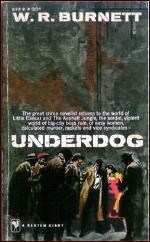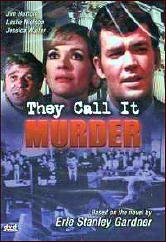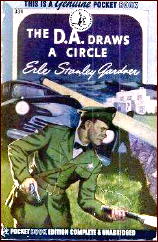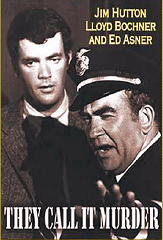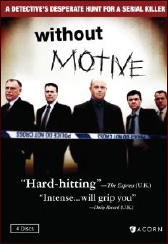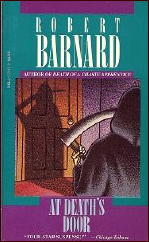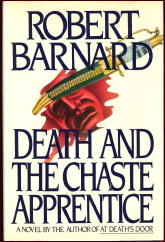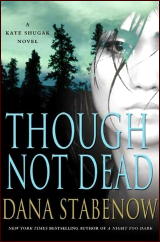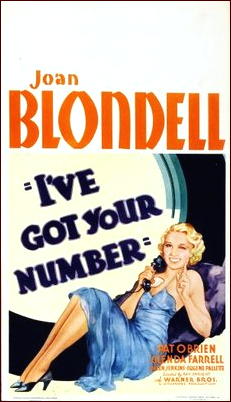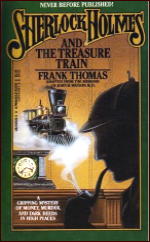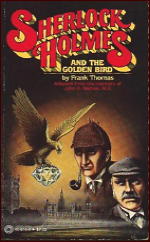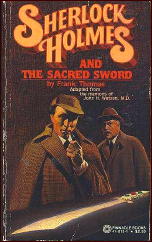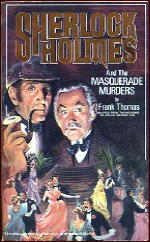A TV Review by Mike Tooney
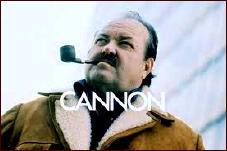
“Murder by Proxy.” An episode of Cannon (1971-76). Season 3, Episode 5. First broadcast: October 10, 1973. William Conrad (Frank Cannon), Anne Francis (Peggy Angel), Linden Chiles (Ray Younger), Marj Dusay (Mrs. Farrell), Charles Bateman (Lt. Paul Tarcher), Ross Hagen (Wendell Davis), Charles Seel (apartment house manager), James Nolan (Sparks Foster), Jack Gaynor (man). Writer: Robert W. Lenski. Director: Robert Douglas.
“Some years ago I devised, as an experiment, an inverted detective story in two parts. The first part was a minute and detailed description of a crime, setting forth the antecedents, motives, and all attendant circumstances. The reader had seen the crime committed, knew all about the criminal, and was in possession of all the facts. It would have seemed that there was nothing left to tell. But I calculated that the reader would be so occupied with the crime that he would overlook the evidence. And so it turned out. The second part, which described the investigation of the crime, had to most readers the effect of new matter. All the facts were known; but their evidential quality had not been recognized.” —
R. Austin Freeman, “The Art of the Detective Story” (1924)
There was a time when many, perhaps most, detective stories were whodunnits — the identity of the malefactor(s) would be withheld until the final “reveal” at the finale. (Personally, I prefer them.)
But there is another type of crime fiction called the “inverted detective story,” a kind pioneered by Freeman circa 1912, and which is so ably described by its inventor just above.
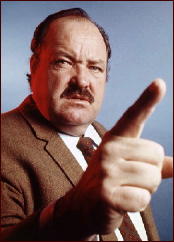
In the inverted, the reader/viewer knows more than the detective; and if done well, it can be just as entertaining as a whodunnit.
In the wake of the phenomenal success of the Columbo TV series, which with only one exception were all inverteds, other television shows tried their hand at it — bringing us to “Murder by Proxy.”
This particular Cannon episode could be regarded as a model of the form.
Peggy Angel (Francis) is a business woman who often frequents a certain bar after hours to unwind. She has no idea that she’s being set up to be framed for the murder of someone she doesn’t even know, by people she’s never even met.
The bartender slips her a mickey, and after a few minutes the world is just a blur to Peggy. The man with a mustache at the end of the bar offers to help her to her car– but when she comes to in an unfamiliar apartment with the murder weapon in her hand and a dead man on the floor, she understandably loses it.
As it turns out, the helpful man with the mustache (Chiles) is the murderer. He’s working on behalf of one of his clients (Dusay), for whom he has more than just professional feelings. (No, I’m not revealing too much — remember, the emphasis is not on whodunnit but “whydidtheydothat” and “howdowecatch’em.”)
With Peggy passed out on a couch, Younger (Chiles) goes about methodically executing his plan. The victim has been lured to the same apartment on some pretext, and Younger guns him down without compunction. He then moves a floor lamp from near the sliding doors to the other side of the room, gathers up some extension cords, stands on a chair to fetch something attached to a suction cup inside the skylight in the foyer, removes a tape from the cassette player, puts the gun in Peggy’s hand, and makes his exit.
And that’s just Act I, roughly the first fifteen minutes, an admirably efficient piece of film making requiring about half the time it would take a Columbo episode to relate.
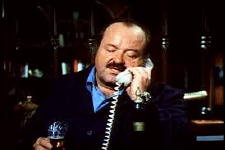
Enter Frank Cannon, an old friend of Peggy’s and an ex-cop turned PI. As usual, all of this circumstantial evidence is solidly against her, and she’s languishing in jail as a guest of the county. It’s fairly obvious clearing Peggy is going to be a tough job.
Unlike many Cannon episodes, which suffer from a lot of filler — usually in the form of car crashes, gun fights, helicopter chases, and so forth — “Murder by Proxy” shows its protagonist in full detective mode, with any attempt to terminate our hero left to the next-to-last scene.
Cannon’s investigation has, as Freeman indicated, “the effect of new matter.” That moved lamp, for instance: Cannon notes the markings on the rug and the lamp’s removal and correctly concludes how it was used to establish an alibi for the killer(s), as well as to exploit Peggy’s well-known temper.
He finds fragments on the rug in the foyer and, using a chair, locates that easily overlooked suction cup in the skylight (the police forensics was pretty sloppy in this case, nevertheless), and reasons out its connection to the floor lamp, as well as just how the cassette player figured in all this.
And for Ellery Queen fans, there’s even a dying clue.
About the cast: William Conrad (1920-94) starred in 121 episodes of Cannon, 14 installments of the short-lived Nero Wolfe (1981), and 104 episodes of Jake and the Fatman (1987-92).
Anne Francis (1930-2011) featured in 30 episodes of Honey West; she also gave a superb performance in the Twilight Zone installment “The After Hours” (1960).
Linden Chiles (born 1933) specializes in character parts; he appeared in four episodes of Banacek as the frazzled insurance company executive.
The director, Robert Douglas (1909-99), was a worthy successor to Basil Rathbone as a Hollywood villain (59 titles to his credit); he also directed mostly TV (39 titles), including Surfside 6 (7 episodes), 77 Sunset Strip (12), The Alfred Hitchcock Hour (4), Adam-12 (6), Cannon (5), The F.B.I. (13), The Streets of San Francisco (4), Baretta (9), Future Cop (2), and one Columbo (“Old Fashioned Murder,” 1976).
